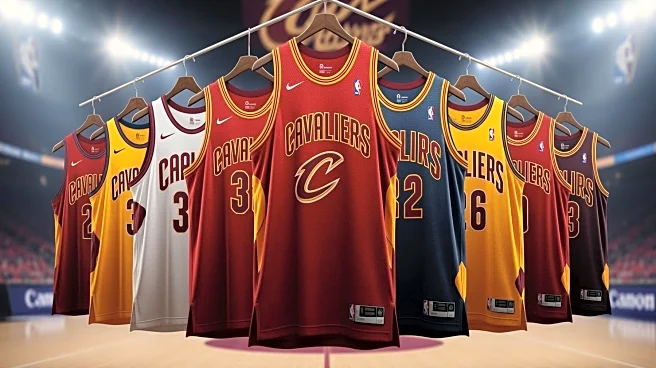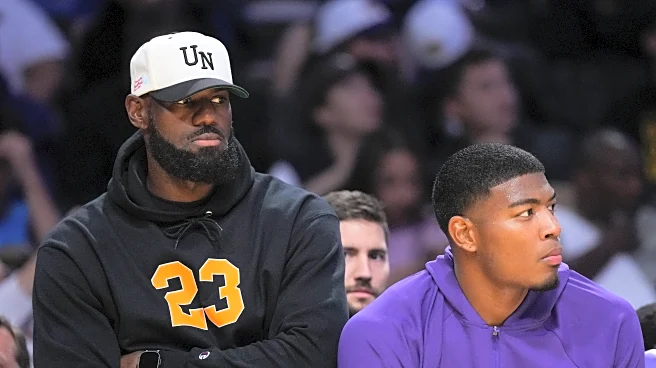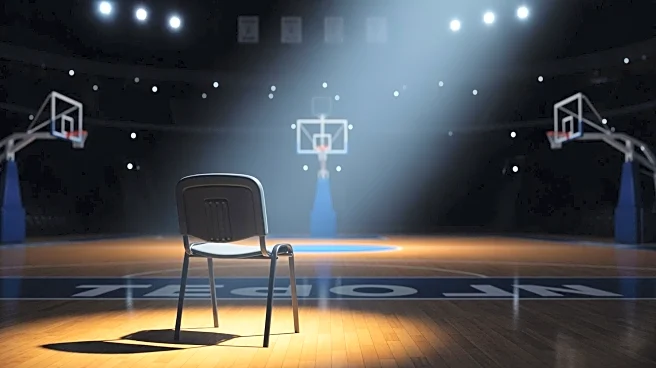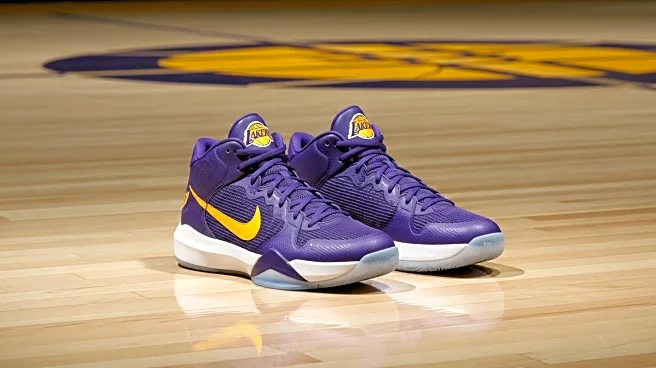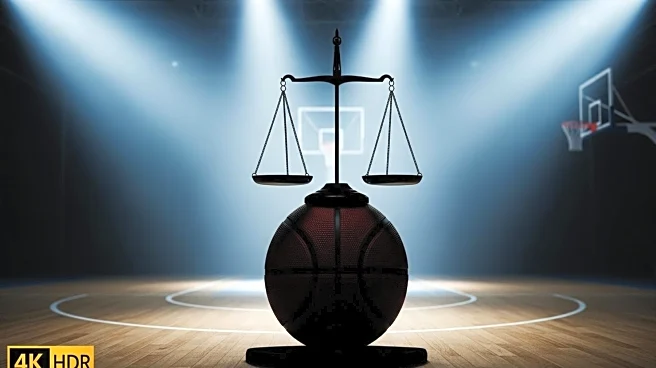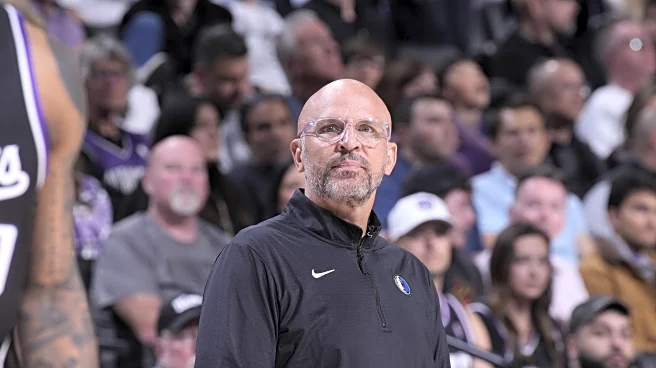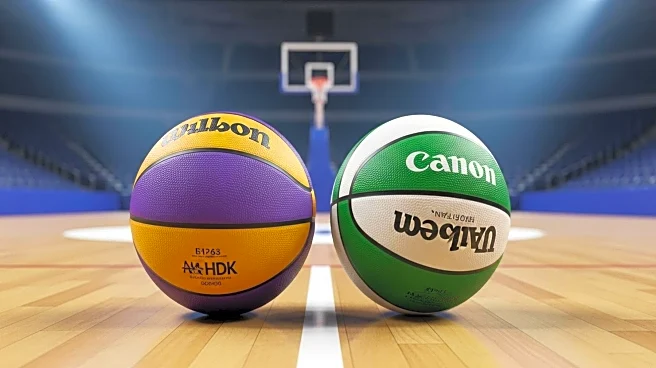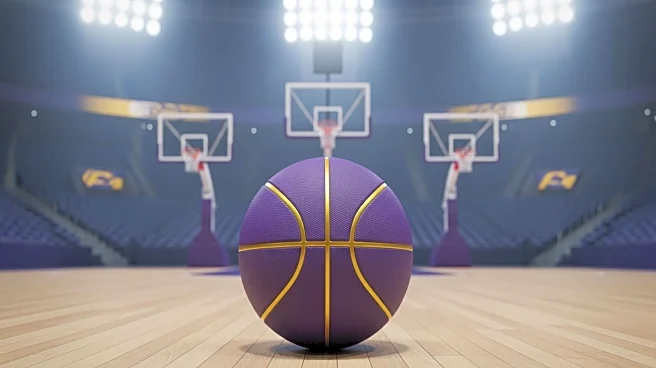What's Happening?
The Cleveland Cavaliers have announced the introduction of a retro Nike NBA Classic Edition jersey for the 2025-26 season. These uniforms pay homage to the deep navy blue, wine, and gold design worn during
LeBron James's early career from 2003 to 2010. The Cavaliers will also feature a Classic Edition court during home games, incorporating design elements from the mid-2000s. The uniforms will debut on November 5 against the Philadelphia 76ers and will be worn in several key games throughout the season, including matchups against the Los Angeles Lakers and New York Knicks. The announcement coincides with plans to honor the 2006-07 season, the first in franchise history to advance to the NBA Finals.
Why It's Important?
The Cavaliers' decision to bring back retro uniforms highlights the enduring legacy of LeBron James's impact on the franchise and the NBA. This move not only celebrates a significant era in the team's history but also taps into the nostalgia of fans who witnessed James's rise to stardom. By honoring past achievements, the Cavaliers strengthen their brand identity and engage with their fan base, potentially boosting merchandise sales and attendance at games. The initiative reflects the broader trend in sports of leveraging historical success to enhance current marketing strategies.
What's Next?
As the Cavaliers roll out these retro uniforms, they may see increased interest from fans and collectors, particularly those who followed James's career closely. The team could capitalize on this momentum by organizing special events or promotions tied to the retro theme. Additionally, other NBA teams might consider similar strategies to honor their own historical milestones, leading to a wave of nostalgia-driven marketing across the league.
Beyond the Headlines
The introduction of retro uniforms also speaks to the cultural significance of sports icons like LeBron James and their ability to shape team identities long after their departure. This initiative underscores the role of sports in preserving and celebrating cultural heritage, as well as the potential for teams to use historical narratives to foster community engagement and loyalty.
